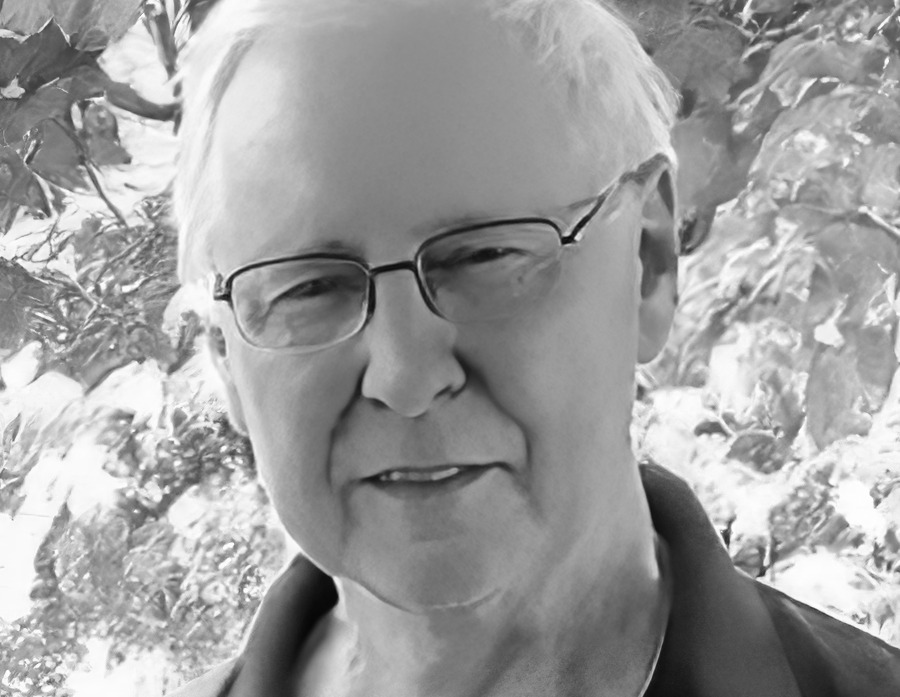
I met DeWitt Henry on an online poetry reading series, LitBalm. I’d read his book Sweet Marjoram: Notes and Essays (2018), and I knew he had founded the famous literary journal Ploughshares, and was an emeritus professor at Emerson College. After we chatted about his presidential namesake and about cotton gins, he read a brilliant poem in the open mic and our correspondence and friendship began on email. We’ve been discussing literature, family, art, poetry and food ever since. I celebrated when his memoir, Endings & Beginnings: Family Essays (2021), was longlisted for the PEN/Diamonstein-Spielvogel Award for the Art of the Essay, alongside Salman Rushdie. DeWitt’s love of language and his extraordinary use of language are reasons why I wanted to share our conversations, as I find myself returning to them in an effort to understand myself as a writer.
Cassandra Atherton: One of the first things we first bonded over was a love of wordplay and intertextuality (look out Barthes, Bloom and Kristeva!) Your Foundlings: Found Poems in Prose (2022) is the ultimate ‘mash-up’ (if we get into Mix Master terms, which we have a few times … and ideas about redubbing). How did you choose the prose texts (as varied as Richardson’s Clarissa and Jamaica Kincaid’s My Brother)? Were they chosen because they are some of your favourite prose works (they are certainly some of my favourites of all time) and can you outline your process or the practice of making poems from prose? Where do you start? What are you aiming for in the poems? Did you have to abandon any? Too many questions?
DeWitt Henry: I start with my editing and teaching life as ‘embodied’ in my personal library. Rereading favourites, such as Anna Karenina, I marked up over time sections or paragraphs that epitomised a novel, poem, play, or essay as a whole. Each became part of my thinking and stayed with me; and they found me, also. Some were in classics ancient and otherwise; some from my undergrad years (Swift, Richardson, Eliot, Flaubert, Lawrence, Joyce, Forster, Woolf, Bowen), some from works by emerging contemporaries as they appeared in Ploughshares and other lit mags. Anderson, Welty, Hemingway, Munro, Olsen, McPherson, Carver, Coover, were central to my later teaching courses in the American Short Story, Contemporary American Novel (O’Brien, Moore), and Memoir (Orwell, Duncan, Conroy, Kinkaid). I did have points to make about my personal canon, as it were, between works old and new, fashionable and enduring (or deserving to endure), and relevant both to their times and ‘ours’ – including new generations and readers. I hoped to entice new readers with samplings of the originals.
I also wished to play with different notions of poetic voice and form, while using the original text as much as possible, while also framing it for self-standing focus – with my own irony, usually both about the original work and its vision, as reflected by my titles, rhythm, and line breaks, and sometimes by overt paraphrase or orienting information. And as the series grew, I wanted to emphasise thematic clusters and contrasts that originated in my own concerns, questionings and vision. The opening cluster, for instance, deals with the lonelinesses of solitary women (as voiced by both male and female authors), and then of solitary men.
Some writers, especially those writing lyrical and densely stylised prose didn’t work for me. No Faulkner, for instance, though I looked at key passages in ‘The Bear’ and ‘Old Man’. And almost no Evan S. Connell, whose chapter ‘Clock’ in Mrs. Bridge was so ‘poetic’ as to need only line breaks. Passages from Gorki, Richard Hooker, Emerson, and Richard Yates I managed to turn into poems, but they didn’t work thematically with my collection and so I put them aside. I did (imitating the practice of both Thomas Hardy and DH Lawrence) return to my own works in prose fiction and memoir and include as ‘Alone in Grief’, ‘Baby Sitting Nieces’, and ‘Bungee’. One of the most difficult conversions proved to be ‘Echo Chamber’ from A Passage to India by E.M. Forster, not because of style, but because the nihilistic epiphany of Forster’s Part II – Caves, Chapter XIV – was spread out over many pages, and while keeping true to the original, I had to bring fragments together via paraphrasing into a single experience/poem.
CA: Yes, you’ve written more about this in your apologia for Foundlings. I love that you discuss, ‘How lines became verses and verses became stanzas; how blank spaces or “silences” serve like a frame for painting or photograph; how punctuation, meter, stresses and pauses create emphasis and voice’. As a prose poet, I am fascinated by framing and spaces. There are silences pressed between words and sentences in prose poetry’s ubiquitous boxes. Your ‘rules’ for Foundlings are also a nice way to ensure there is no issue with appropriation or plagiarism or even misunderstanding. You’ve said:
I have a list of intertexts in the back of my book of poetry, Exhumed, which you loved reading. I think of that as my own rules for writing poems that celebrate intertextuality – it’s like a cast of characters. Now, I have to hear more (officially) about the process of working with your daughter on the shadow boxes! Foundlings contains full-colour photographs of Ruth’s artwork and it’s incredible! Obviously, I want the process outlined for all budding ekphrastic poets, artists and scholars! Shadow boxes are exciting for me as they are so reminiscent of Joseph Cornell and his assemblage art! Anyway, your Foundlings seems to have started an amazing almost reciprocal ekphrastic process – tell me ALL about it!









